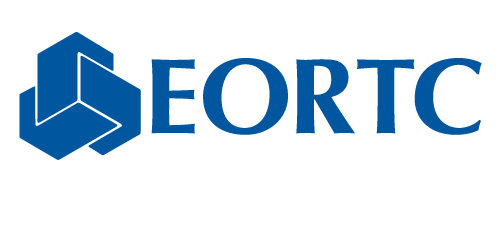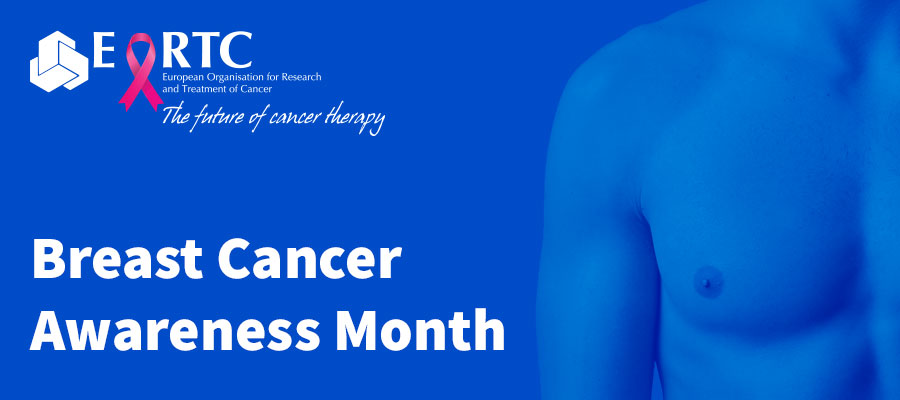Male and Female Breast Cancers are different!
11 Oct 2017
The EORTC International Male Breast Cancer Program is a joint study between EORTC Breast Cancer Group and Translational Breast Cancer Research Consortium (TBCRC) in the USA. The Program consists of three parts. (i) Retrospective collection of Male Breast Cancer treated in participating centres for whom centralized clinical information and tumour samples were collected for over 20 years; (ii) prospective registry of newly diagnosed cases during a period of approximately 30 months, with clinical data and tumour samples; and (iii) prospective clinical studies to optimize the management of these patients. EORTC 10085/TBCRC/BIG/NABG International Male Breast Cancer Program is unique since it includes the largest male breast cancer population ever studied using central pathology review and it includes features that are not assessed in routine daily practice(1).
Male breast cancer is a rare disease accounting for 1% of all breast cancers. Most cases of male breast cancer are detected in men between the ages of 60 and 70, although the condition can develop in men of any age. Incidence rates have remained stable since the early 2000’s.
The EORTC retrospective study has uncovered some of the differences between female and male breast cancer, and the clinical investigators hope that this will help doctors to make better treatment choices for male breast cancer patients.
Clinicopathological data were obtained from 1800 male breast cancer patients that were diagnosed between 1990 and 2010. The aim of the present study was to describe and analyse several pathological features in male breast cancer. Results showed that male breast cancer is almost always of ductal histology (86.6 %), whereas in female breast cancer patients, the most common histological subtype is ductal carcinoma and the second most common subtype is a lobular carcinoma. Further to this, the investigators also suggested that the grading system that was developed for females might not be extrapolated for males, as the histological grade in male breast cancer did not correlate with relapse free survival or overall survival as seen in female breast cancer.
“This important study shows that we need to define different treatment options for male breast cancer patients”, says Dr Fatima Cardoso, Principal Investigator of the EORTC International Male Breast Cancer Program, the Director of the Breast Unit of the Champalimaud Clinical Centre, Lisbon, Portugal. “Further research is needed to understand the differences between male and female breast cancers in order to provide the optimal treatment for men.”
The analysis for the prospective registry of newly diagnosed cases, the second part of the Program, has just been completed. This study is a collaboration of EORTC Breast Cancer Group, BOOG (Borstkanker Onderzoek Groep) and 7 other groups (LACOG, HeCOG, HORG, ICORG, SAKK, SABO, TBCRC). The study enlisted over 500 patients and the results will be presented at San Antonio Breast Cancer Symposium in December this year
The challenge in conducting clinical trials in rare diseases is the small numbers of available patients . Enrolment of patients into clinical studies in sufficient numbers to generate meaningful data usually requires the participation of many sites across multiple countries. This study showcases EORTC’s strengthen in conducting rare disease trials, and it establishes collaborations with other groups to increase the number of patients going into these types of trials. With an experienced clinical infrastructure, it facilitates and supports the trials in order to address the unmet needs of these rare cancers.
“EORTC keeps delivering knowledge for all types of cancer,” says Dr Denis Lacombe, Director General of EORTC. “We are proud to demonstrate once more, EORTC leadership in the field of rare cancers, one of our flagships, leaving no one behind!”
(1)Pathological characterisation of male breast cancer: Results of the EORTC 10085/TBCRC/BIG/NABCG International Male Breast Cancer Program. Vermeulen MA, Slaets L, Cardoso F, Giordano SH, Tryfonidis K, van Diest PJ, Dijkstra NH, Schröder CP, van Asperen CJ, Linderholm B, Benstead K, Foekens R, Martens JWM, Bartlett JMS, van Deurzen CHM. Eur J Cancer. 2017 Sep;82:219-227. doi: 10.1016/j.ejca.2017.01.034. Epub 2017 Mar 11.
Related News
EORTC: Advancing research and treatment for rare cancers
29 Feb 2024
EORTC Fellowship Programme: celebrating more than 20 years of impactful collaboration
22 Feb 2024
Appointment of Malte Peters as EORTC Strategic Alliance Officer
9 Feb 2024
Unique series of workshops in partnership with the European Medicines Agency (EMA)
7 Feb 2024
EORTC launches a prominent clinical trial in older patients with locally advanced (LA) HNSCC (Head and Neck Squamous Cell Carcinoma)
14 Dec 2023
Seven IMMUcan abstracts selected for ESMO Immuno-Oncology Congress 2023
6 Dec 2023
EORTC Quality of Life measures integrated in CDISC
20 Nov 2023
EORTC and Immunocore are collaborating to launch the ATOM clinical trial of tebentafusp in Adjuvant Uveal Melanoma
7 Nov 2023
Treatment with decitabine resulted in a similar survival and fewer adverse events compared with conventional chemotherapy in older fit patients with acute myeloid leukaemia
31 Oct 2023
New results and forthcoming EORTC trials in rare cancers, lung, head and neck, and breast carcinomas presented at ESMO 2023
20 Oct 2023


